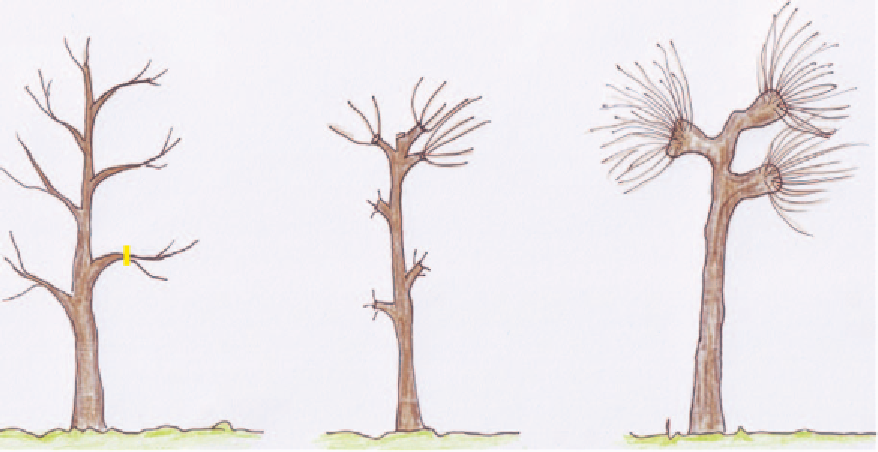Agriculture Reference
In-Depth Information
Figure 4.54
Pollarding.
When your tree has reached the required
height, at least 1.5 m, remove the apical bud
(see 'Apical buds', page 3) of the central
leader (main trunk) this will concentrate the
plants resources at this point (Figure 4.54,
red bar
). Shorten back any side branches
below the desired height to about 30 cm to
help thicken the trunk; these can be
removed completely in a year or so (Figure
4.54,
yellow bar
). If your pollard is like the
Hydra, to have many heads, select the
branches at the top of the trunk that spiral
around the leader and have good wide
branch angles. These will be the main
scaffold branches (Figure 4.3). Remove any
crossed branches and reduce the remaining
ones to about 60 cm to 1.2 m from the trunk,
depending on how you wish to train the tree
(Figure 4.54,
green bar
). Prevent the main
leader reasserting itself and prune out any
side growths from the scaffold branches.
Once the scaffold branches are established,
simply prune off the massed new growth at
the end of the dormant season to a point just
above the previous season's growth, about
2 cm (Figure 4.54,
green bar
). This can be
done every year or every few years and slowly
the 'heads' will develop.
Removing a tree's entire canopy annually will
place huge demands on its economy. Ensure
that it is well-watered and fed to cope, or
perhaps stagger the pruning removing two-
year-old growth annually.
Coppicing
Coppicing involves regularly cutting a tree or
shrub to a stump or stool. This is essentially
the same as pollarding but with a vastly
different look Coppicing can also be used to
create multi-stemmed trees. These may have
showy bark (see Figure 4.55).








